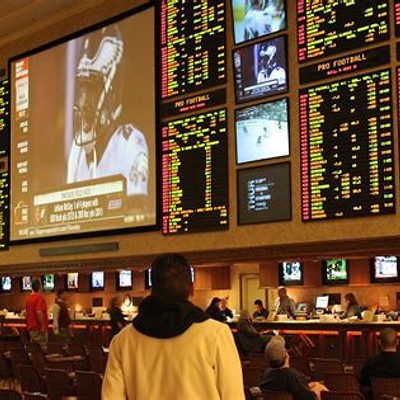Death to Halloween
As the longtime American tradition becomes more commercialized, will Charlotteans turn to el Día de los Muertos?
By Karen ShugartJohn Hairston Jr. is standing in front of a painting at Pura Vida, the hip cross-cultural shop, gallery and performance space on Central Avenue. "I've always wanted to celebrate it," says Hairston, an artist, as he looks at the death-themed art that might appear macabre to the unknowing eye. "I've always had a thing about death."
"It," to Hairston, is the celebration of the Mexican tradition of Día de los Muertos, or Day of the Dead. Inside Pura Vida, one of the more diverse hot spots in Charlotte, Hairston and dozens of others have gathered for an early commemoration of the three-day celebration, which allows the living to honor the dead through festivities at once somber and joyous between Oct. 31 and Nov. 2. But the crowd gathered on this night appears to be mostly white, privileged and of an intellectual bent.
Contrary to popular belief among some North Americans, el Día de los Muertos is not an exercise in the morbid or the grotesque, even though the tradition's chief symbols include skulls and skeletons. But Hairston is a longtime fan of the tradition, and to some degree he has been ever since he learned about the Day of the Dead in elementary school.
"It's almost like a Christmas kind of holiday, where it's sacred and it's religious," he says. "I thought it was really neat."
Reaching the rest of Charlotte, however, may take a little bit longer. After all, most longtime Charlotteans probably see el Día de los Muertos more in terms of Halloween.
In 1990, Mecklenburg County was home to fewer than 7,000 Latinos, a diffuse number that didn't necessarily encourage the widespread flowering of new customs. But ten years later, Latino residents numbered nearly 49,000 -- a population boom of 570 percent that made Charlotte a more fertile ground for new and changing traditions. Much of the population boom has been attributed to people from Mexico, one of the handful of countries that observe el Día de Los Muertos.
That doesn't mean it's been easy to find people around here who celebrate it. Annabel Manning, who came to Charlotte from Mexico after 17 years in New York City, misses the festivities and likeminded celebrants she's found elsewhere. Manning continues to adorn her home with the bright colors of papel picado, the decorative banners of tissue-paper cut-outs strung in homes and cemeteries during el Día de los Muertos. She wishes she knew more people who did the same. "I'm always looking for people to celebrate with," she says as she walks around Pura Vida.
Día de los Muertos has been taught as a cultural event in many schools for years. And the tradition has not gone unnoticed in the arts community. In 2002, about four years after Pura Vida co-owner Teresa Hernandez moved here, the Levine Museum of the New South asked her to set up an ofrenda, or altar, for the holiday. The next year, another museum called Hernandez. She was elated that word was spreading.
But until last year, when the Latin American Coalition sponsored a small event attended almost exclusively by Latinos, Charlotte scarcely had a public celebration. This year's event -- held Saturday, Oct. 29, from noon to 6pm at the corner of Central and Thomas avenues -- is expected to be bigger and more diverse. "We're hoping it will be more of a place where two cultures can really connect," says Jess George, associate director of the Latin American Coalition. "We live in an extremely diverse city, but we don't always see the diversity right in front of us."
Other cities with longer histories of Mexican American populations, particularly those in Texas and California, have been celebrating Día de los Muertos prominently for years. So much so that it's prompted complaints that the holiday has been co-opted and commercialized, and that its religious roots have been diluted and death imagery made marketable. Given its place on the calendar, Day of the Dead has been intractably linked in this country to Halloween, much to the chagrin of those who point out the huge spiritual and philosophical differences.
"Halloween is supposed to be scary," says Hernandez, who celebrates both holidays. "Day of the Dead isn't. The holiday connects family. It's not about getting candy or getting in costume."
Still, the seemingly unshakable link between Day of the Dead and Halloween has drawn backlash in some quarters. As the popularity of Día de los Muertos spreads to new areas of the US along with the Latino population, the tradition loses its spiritual intimacy much like Christmas has lost its link to the Christian tradition. Even in some areas of northern Mexico, where schoolchildren are apt to celebrate Día de los Muertos and Halloween side-by-side, the clash has led some schools and towns to ban trick-or-treating. On both sides of the border, some Mexicans and Mexican Americans have criticized what they see as a bastardization of their culture. The next step could be Day of the Dead sales at Wal-Mart.
"We live in a society that commercializes a lot of traditions," says Miguel Dominguez, a professor of Spanish at California State University Dominguez Hills, just outside Los Angeles. "It's not surprising that one would find the commercialization of Día de Los Muertos."
Dominguez is not particularly offended by the trend, though he notes that the tradition is celebrated much differently today than it was when he was growing up in LA. Bakeries now advertise the sweet Pan de Muertos, or Bread of the Dead, weeks in advance. Stores sell the little sugar skulls, or calaveras, that are popular during the holiday.
Día de los Muertos isn't the only Mexican event that's been taken in and altered by American culture, Dominguez adds, nor is it the only holiday whose meaning is sometimes lost. "Some people will celebrate Fourth of July and they can't tell you what it's about, but they're having a fun time at the beach or weenie roast," he says.
Enrique Fernández Cervantes, curator of the Bath House Cultural Center in Dallas, says artists occasionally decry what's perceived as the tradition's loss of purity. Recently, Fernandez says, an artist there was upset because one piece in this year's celebration was an ofrenda to a pet instead of a person. Overall, however, Fernandez has seen more awareness of what the holiday means since the cultural center held its first exhibition 19 years ago. "A couple of years ago, I was getting entries from local artists who had never heard of the celebration, and I was getting lots of photographs and paintings of ghosts and scary monsters and witches," he says.
People who have organized Day of the Dead events in several other traditionally Hispanic-heavy cities are quick to point out the differences between Día de los Muertos and Halloween, but they don't seem to mind mixing the two traditions in people's minds. "It kind of appeals to the spookiness we enjoy about Halloween," says George of the Latin American Coalition.
Perhaps that's because some organizers see both late-October traditions as one more way to unite people of different cultures. "It's great that more people are embracing (Día de los Muertos) because it encourages cultural diversity," says Lacey Richter, education coordinator at the Mexic-Arte Museum in Austin, Texas. "Anything that offers people to come and join and break down some cultural barriers is a good thing. That's how people learn about other cultures and how other people celebrate and live."
It's a bit early to fear the commercialization Día de los Muertos in Charlotte, which is still is less than 10 percent Latino, a far smaller population than in cities in Texas and California, where the tradition enjoys a much higher profile. Still, the Day of the Dead in Charlotte is still likely to differ from el Día de los Muertos back home, says George. That tradition began thousands of years ago among Aztecs in the area that is now Mexico and a few other South and Central American countries. Later, the tradition blended with Spanish Roman Catholic beliefs and rituals and became what's today known as Día de los Muertos. The Spanish sought to make it a Christian holiday, moving it from July and August to November, where it would coincide with All Saints Day and All Souls Day, precursors of Halloween (which means the two traditions are vaguely connected). The holiday adopted much of Catholic theology but still maintained its Aztec rituals and imagery. Today, celebration of Día de los Muertos varies somewhat by region and country.
During the celebration, families build altars in their homes to dead loved ones. Many altars feature images of Jesus, the Virgin Mary or saints. These ofrendas can be elaborate affairs, with the deceased's favored food, drink and other personalized items. Tradition dictates that celebrants offer ancestors gifts, typically items they enjoyed in life. "The belief is that you're showing your loved ones that passed on that you haven't forgotten them," Hernandez says.
At the Pura Vida event, Hernandez and her staff erected a Día de los Muertos shrine honoring the artist Frida Kahlo. The ofrenda is resplendent with paper flowers of vivid colors, including orange sherbet, electric blue and hot pink. Fruit is placed near candles and a bottle of tequila lingers near the religious imagery.
Some families put an extra plate at their tables at night. After a long trip from beyond the grave, it's believed, the dead are likely tired and hungry. Rosalia Torres, a Mexican-born artist whose work is featured at Pura Vida, jokes that some people pay such respects out of fear. "If you don't do that, they'll come and pull your sheets," she says with a laugh. The holiday is serious, but also joyous. "We make fun of the dead," Torres says.
She tells the story of La Llorana, whose figure is depicted in one of Torres' paintings. Though versions vary, La Llorana is generally the story of a woman whose husband leaves her. In her grief, she cannot bear to look at the children she had with him, so she drowns them. She eventually becomes a tortured spirit who wanders in search of her children.
When Día de los Muertos is celebrated just after Halloween, whole villages in Mexico and other countries, particularly rural villages, will travel to cemeteries and have picnics at grave sites while bands play and people party. It's a festive affair a somber undercurrent. "It's definitely not mournful," Hernandez says. "It's not morbid."
The celebratory aspect of Día de los Muertos comes from the Aztec perspective on death. "The idea that the dead and the living can share the world is not very alien to the Mexican viewpoint," Dominguez says. "We see death as part of life."
Octavio Paz, the Nobel Prize-winning Mexican writer and social critic, once wrote that this belief as an important distinction between the United States and Mexico. "The word 'death' is not pronounced in New York, in Paris, in London, because it burns the lips," Paz wrote in The Labyrinth of Solitude. "The Mexican, in contrast, is familiar with death, jokes about it, caresses it, sleeps with it, celebrates it."
The holiday can comfort the living. When loved ones die, Hernandez says, "You at least feel you're always going to connect with them each year."
Dominguez says the tradition also provides comfort in the face of one's own mortality.
"Really, we are born to die," he says. "And when I put up an altar, I teach my children to do that. I know that one day they will do it for me. One of perhaps the biggest traumas could be that I could die and nobody would remember me, but by passing on this tradition, I can at least die knowing I will be remembered at least one or two generations from now.
"It may be a weak crutch," he adds, "but I'll take what I can get."
In Charlotte, the imagery in Día de los Muertos items attracts attention, says Hernandez. She sells such items at Pura Vida and the reactions from customers vary. Some are excited they can finally get the artwork here. Others are curious. Still others shake their heads, confused. "The reactions are real interesting," Hernandez says.
George says part of the holiday's low profile is a result of the decision by some immigrants to let go of old customs. Many of the 1,000 people the Latin American Coalition serves each month have told staff members they don't celebrate Día de los Muertos. "There's very much of a desire to assimilate, to be a part of the American culture," she says.
Still, the tradition lives on, particularly for the more spiritual Mexican Americans and the more curious American artists and bohemians. And as long as Latinos continue traveling to new areas of the United States, the tradition will grow and evolve. Hernandez just hopes it doesn't lose its foundation. Some native-born Americans, Hernandez says, "think it's scary. They think it's cultish, Santeria even." That couldn't be further from the truth.
Other traditions that are relatively new to the United States
Kwanzaa: The festival was created in 1966 by Dr. Maulana Ron Karenga, who wanted a holiday that would help African-American goals of strong family, history and unity.
Cinco de Mayo: Really, it's not just an excuse to drink any more than St. Patrick's Day is. Cinco de Mayo is intended to commemorate the Battle of Puebla in 1862, in which Mexican troops defeated Napoleon. Not to be confused with Mexican Independence Day, which is September 16.
Speaking of 5.00000
-
A Family Affair
Dec 12, 2007 -
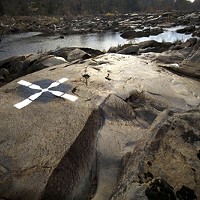
What If the Water Runs Out?
Dec 12, 2007 -
Body Talk
Dec 12, 2007 - More »
Latest in Cover
More by Karen Shugart
-
Mecklenburg and beyond ...
Feb 10, 2009 -
Mecklenburg and beyond ...
Feb 9, 2009 -
Mecklenburg and beyond ...
Feb 6, 2009 - More »
Calendar
-
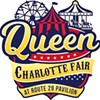
Queen Charlotte Fair @ Route 29 Pavilion
-
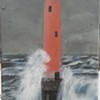
NEW WINDOW GALLERY-Pat Rhea-ACRYLIC PAINTINGS-April 05-30 2024 VALDESE, NC 28690 @ New Window Gallery/Play It Again Records
- Through April 30, 12 p.m.
-

TheDiscountCodes
-
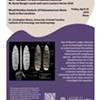
"Blood Residue Analysis of Paleoamerican Stone Tools in the Carolinas" @ Native American Studies Center
- Fri., April 26, 12-1 p.m.
-

Brightfire Music and Arts Festival @ GreenLife Family Farms
-
A beginners guide to online sports betting in the US
-
5 Online Player Communities to Join in Michigan
-
Charlotte Pride and Trans and Queer People of Color Collective clash on Pride Week priorities 2
Disagreements over representation, policing in lead-up to Pride









